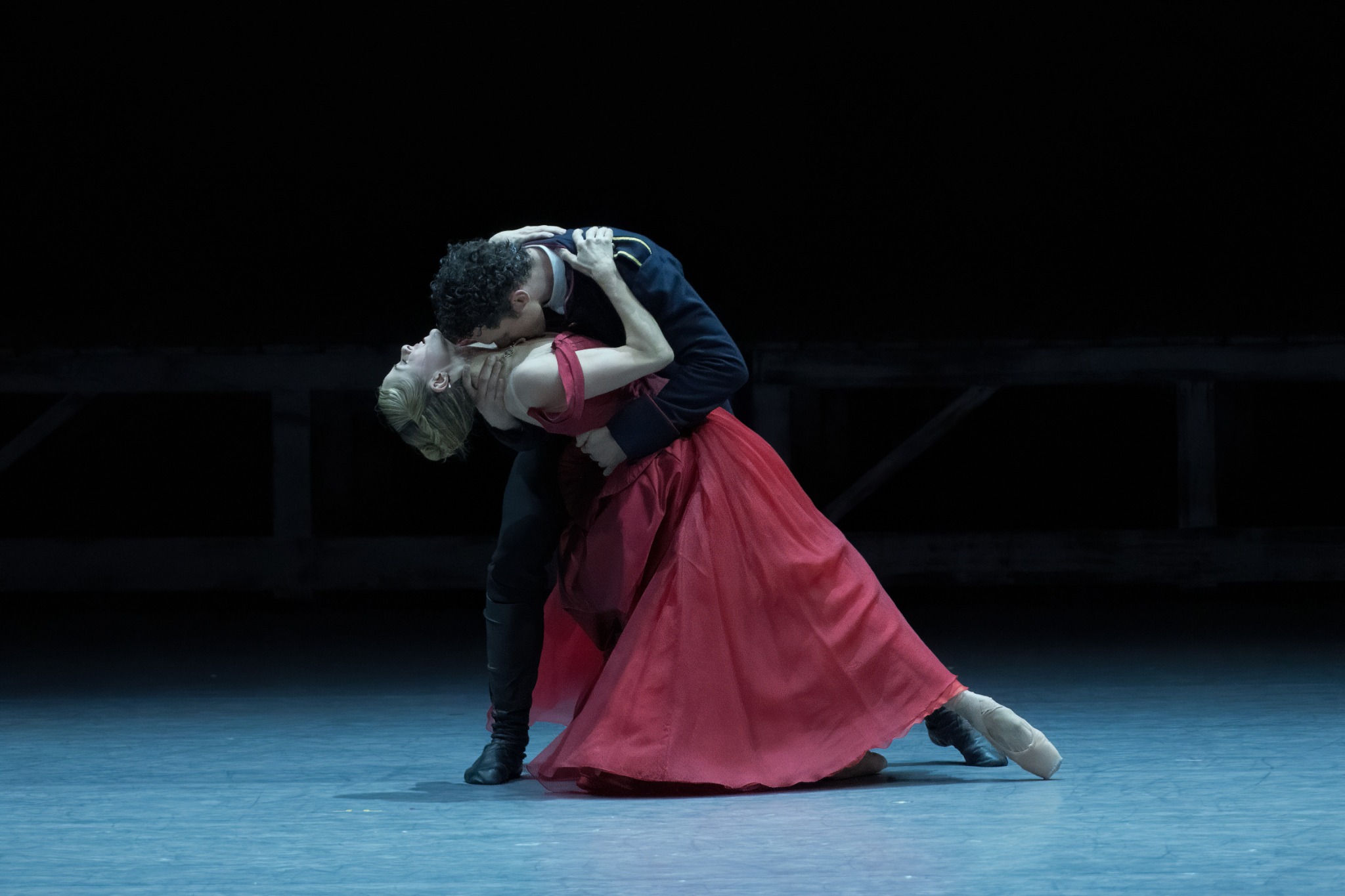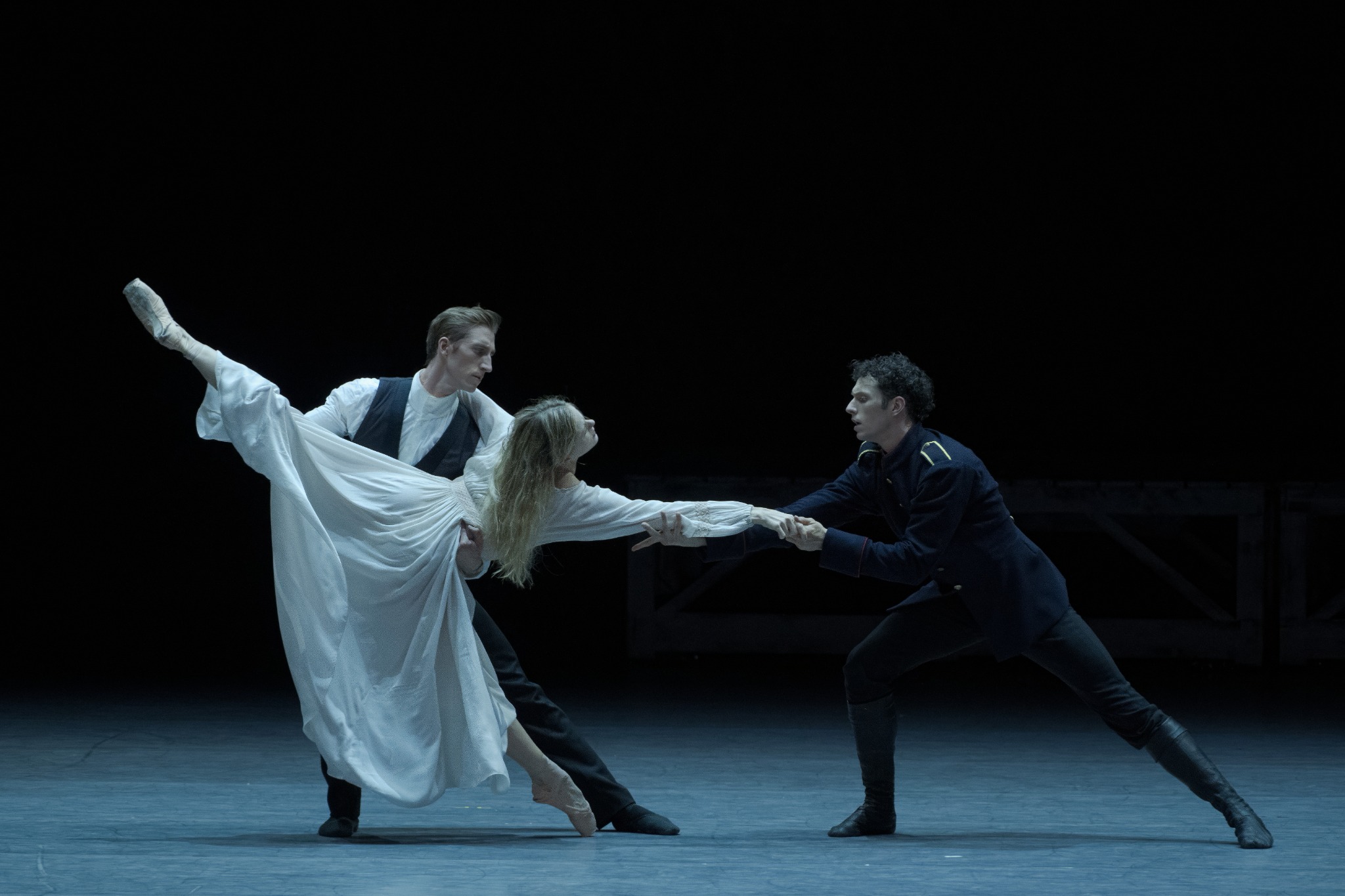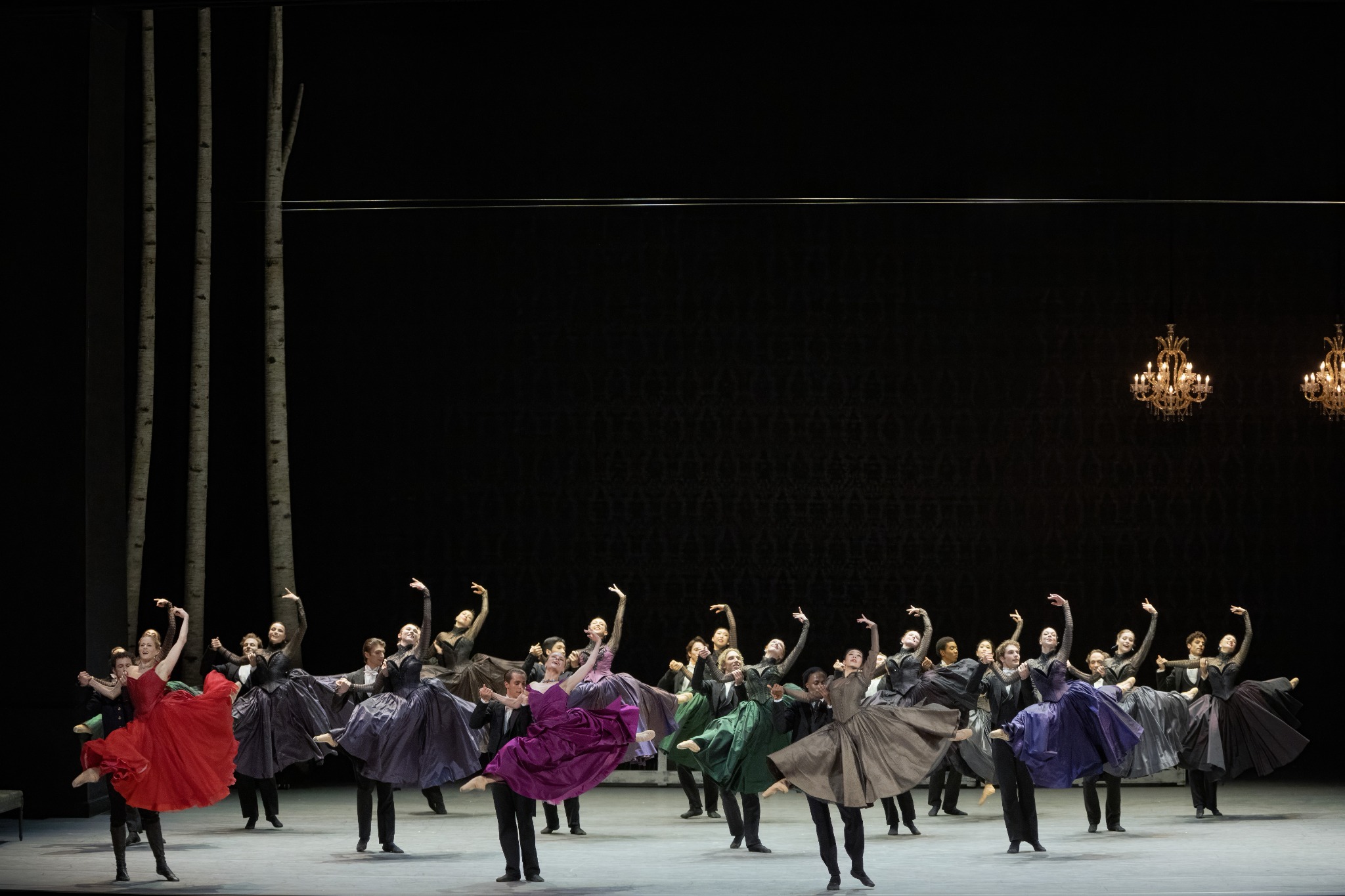Review: Anna Karenina (The National Ballet of Canada)
Many have heard of Anna Karenina as one of literature’s great tragedies. It is the story of a woman torn between passion and social scrutiny, whose life ends in suicide. The National Ballet of Canada’s Anna Karenina closed the season with what I believe to be its strongest offering of the year. Christian Spuck’s interpretation of Tolstoy’s epic brings a modern clarity to a complex story, told with cinematic flair and some of the most compelling character-driven movement I’ve seen this year.
Set in 19th-century Russia, Anna Karenina tells the story of a married aristocratic woman who enters into an affair with a young cavalry officer, Count Vronsky. As their relationship intensifies, Anna becomes increasingly alienated from society, her family, and eventually herself. Alongside Anna’s unraveling, the narrative follows Kitty and Levin, whose love story begins with hesitation but ends in a steady, genuine connection. It also follows Stiva and Dolly, whose marriage is strained by ongoing infidelity.
One of the most effective aspects of this ballet is how the choreography clarifies the emotional dynamics between these couples. Anna (Heather Ogden) and Count Vronsky (Christopher Gerty) move with an all consuming intensity that sharply contrasts the restrained, angered tension between Anna and her husband, Alexei Karenin (Ben Rudisin). Kitty (Breanna Flaherty) and Levin (Matthieu Pagés) bring a softer dynamic, filled with uncertainty and eventual tenderness, while Stiva (Shaakir Muhammad) and Dolly (Tirion Law) showcase their troubled marriage laced with both a superficial charm and frustration in movement.
This production marks the National Ballet of Canada’s first creative partnership with German choreographer Christian Spuck, currently the artistic director of the Berlin State Ballet. Spuck’s choreography is key to how clearly these dynamics come across. Spuck gives every relationship its own choreographic voice. These distinctions not only keep the story easy to follow, but also make it emotionally layered. Each scene feels lived-in, specific, and deeply human.
Even the corps de ballet feels carefully considered, with background movement that adds depth without distraction. Small, beautiful details like flicks of the wrist and synchronized glances build atmosphere and support the storytelling without pulling too much focus. It almost demands a second watch to be able to take it all in.
There were two scenes I kept thinking about after the show. The first is a horse race, where the entire ensemble becomes the crowd, moving in unison to follow the invisible action across the stage. Dancers use binoculars to track the race, shifting their bodies in rhythm with the imagined horses and building a sense of urgency and excitement. It’s playful, believable, and fun to watch.
The other is the shirtless farm boys sequence, which reminded me of Ted Shawn’s early modern works. Here, movement is inspired by manual labour: wide pliés, sweeping motions, and group patterns that evoke the physicality of shovelling and harvesting. The formations are constantly shifting and the movement is tactile and grounded.
Visually, the production finds a careful balance between period detail and modern restraint. The 19th-century costumes by Emma Ryott are sharply tailored to each dancer, flattering and functional without ever overwhelming the movement. Long skirts swirl beautifully during ensemble scenes, while clean lines and muted colours give the production a contemporary elegance.
The lighting by Martin Gebhardt and projections by Tieni Burkhalter add to the cinematic quality, most notably through the use of a white curtain that serves as a projection screen. Black-and-white film-like imagery slides across it, resembling old silent films in texture and pacing. Top-down lighting is used throughout to isolate characters, creating a strong separation of stage space that contributes to the production’s stylized, period-specific cinematic look.
The music throughout the production also carries a great intensity, often creating an eerie, haunting atmosphere that lingers beneath the movement. Featuring selections by Sergei Rachmaninoff and Witold Lutosławski, the score helps to foreshadow what’s coming, mirroring the weight Anna carries and the growing sense that her world is closing in. There is also a live opera singer, who appears three times. Her voice adds depth to key scenes, heightening the emotion without pulling focus from the dancers. It’s a subtle but powerful decision that brings extra beauty and weight to an already affecting work.
Heather Ogden brings a strong and steady presence to the role of Anna, especially in the final scenes, where her isolation and unraveling are hard to look away from. There’s a weight to her performance that builds gradually, and by the end, you really feel the toll of Anna’s choices, the judgment she faces and the shame she feels.
Both Ben Rudisin (Alexei Karenin) and Christopher Gerty (Count Vronsky) also give great performances as the two men in Anna’s life, with acting that adds dimension to the emotional tension at the heart of the story and makes it feel so real.
But the performer who stood out most for me was Matthieu Pagés as Konstantin Levin. Still a corps member, Pagés brought a full-bodied, grounded quality to the role, blending contemporary movement with perfect technique and a warm, sincere presence that was quietly magnetic. His scenes offered a strong contrast to the darker sections of the work. I hope to see more of him next season.
I expected Anna Karenina to be hard to follow. The novel is over 800 pages, filled with characters, politics, and inner monologues. Yet the ballet’s staging and choreography made the story feel clear and emotionally accessible from start to finish. It is the kind of adaptation that pulls you in without needing to know the source material. For me, it was the most memorable ballet of the season from a fantastic company to boot.
Get your tickets as they are almost gone!
Anna Karenina, presented by the National Ballet of Canada at the Four Seasons Centre for the Performing Arts (145 Queen St W, Toronto, ON M5H 4G1), is playing until June 21, 2025. For tickets, please click here.
***Content Advisory: This performance contains scenes depicting simulated drug use, mental health struggles, sexual content, and portrayals of gun and physical violence.
National.Ballet.ca | Socials: @nationalballet
Photo credits:
- Photo 1: Heather Ogden and Christopher Gerty in Anna Karenina. Photo by Karolina Kuras.
- Photo 2: Ben Rudisin, Heather Ogden and Christopher Gerty in Anna Karenina. Photo by Karolina Kuras.
- Photo 3: Artists of The Ballet in Anna Karenina. Photo by Karolina Kuras.
Written by Deanne Kearney
DeanneKearney.com @deannekearney



0 Comments Add a Comment?